The diameter of kurgan No. 1 is 14.70 m. The height of the preserved part is 30 cm from the middle. 70 cm from the western edge. A T-shaped catacomb tomb was discovered from this burial ground. Three skeletons were removed from the inner space of the chamber. Seven clay pots are placed on the heads of these skeletons. The handles of the two mugs are made in a zoomorphic pattern. Thus, the first evidence of the tradition of kurgan with material culture in the Karatobe kurgan ground was found in the grave No. 1.
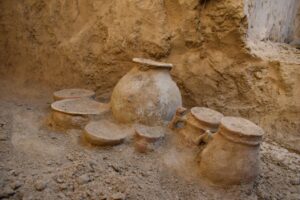
Clay pots from kurgan ground No.1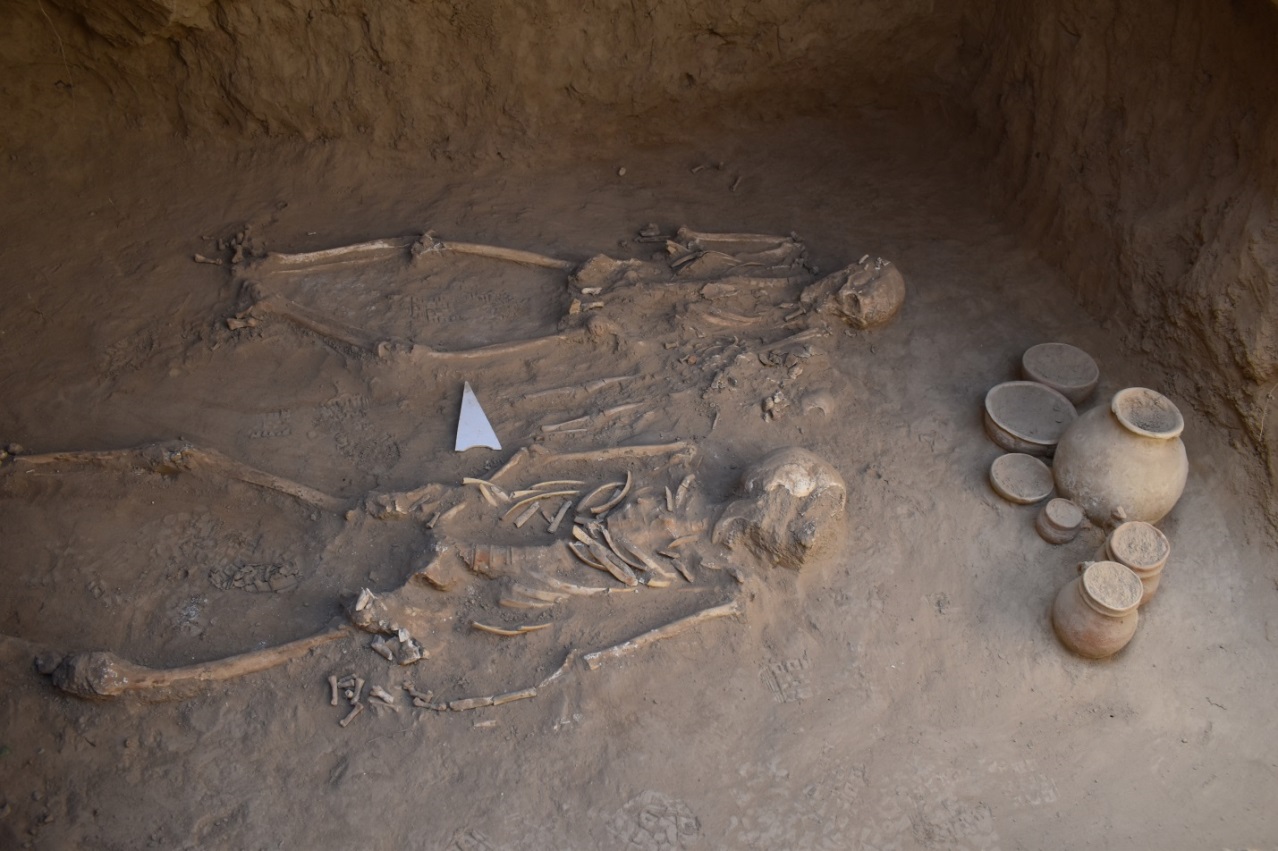
Skeletons lying in kurgan ground No. 1
The diameter of the kurgan is 13.60 m, height is 0.90 cm. The excavations were carried out from the reference point to 90 cm. As a result, the dromos loop was observed lying in a southerly northerly direction with a slight deviation to the West. A pit inserted into the upper part of the chamber was carried out from the top of the mound to 4.30 m. However, no results related to the burial were obtained. No. 2 as follows from the mound, according to the tradition of kurgan in ancient times in honor of those who died during the war or in other cases, no corpses were found, an empty burial (cenotaph) was erected. So the kurgan № 2 that we dug up could be such an empty grave.
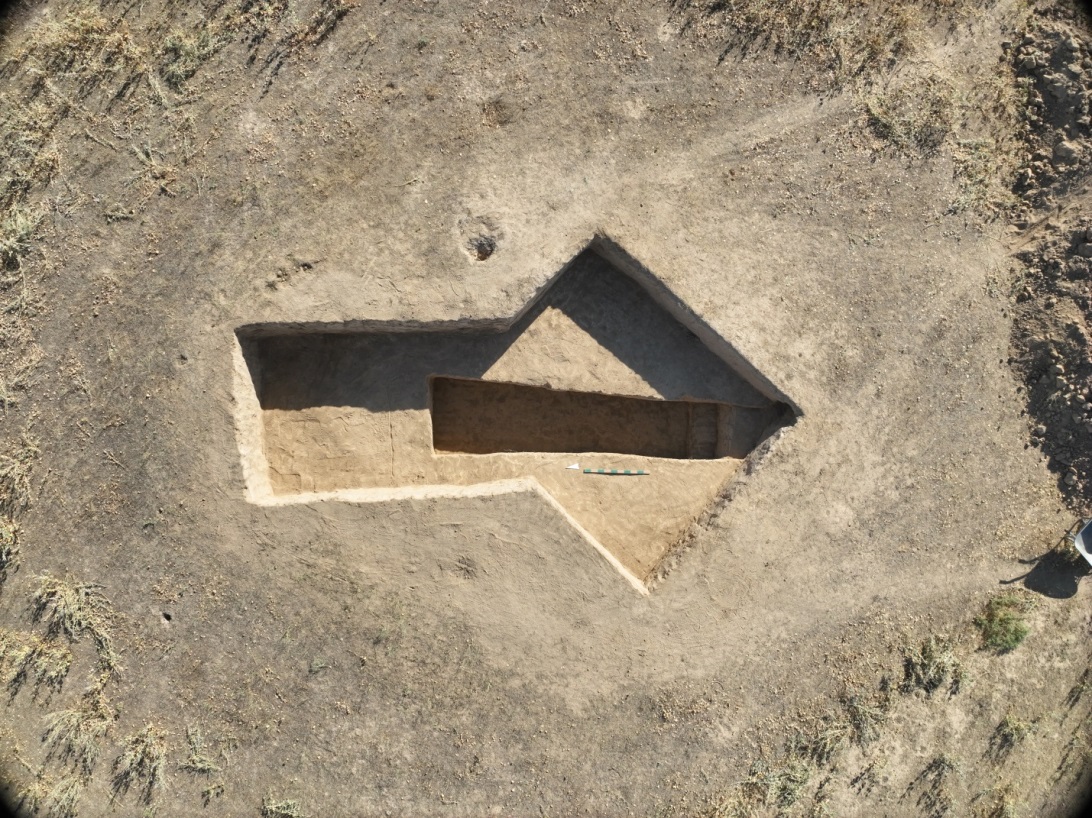
The diameter of this mound is 13 m, height is 1.50 m. During the excavations, a catacomb was discovered. After cleaning the interior of the chamber, one skeleton was discovered. The legs of this skeleton lay on its back, bent at the knees to the left side. Both arms are mounted under the collarbone. The face is turned towards the entrance of the dromos. During the excavations at the Myntobe and Karatobe kurgan grounds, we noticed that the skeletons’ faces were turned towards the entrance of the dromos. It was probably a practice based on the religious understanding of the time. It was at the entrance mouth of the dromos that a flask-shaped pottery was installed. There should be no doubt that there was food from the afterlife inside this vessel.
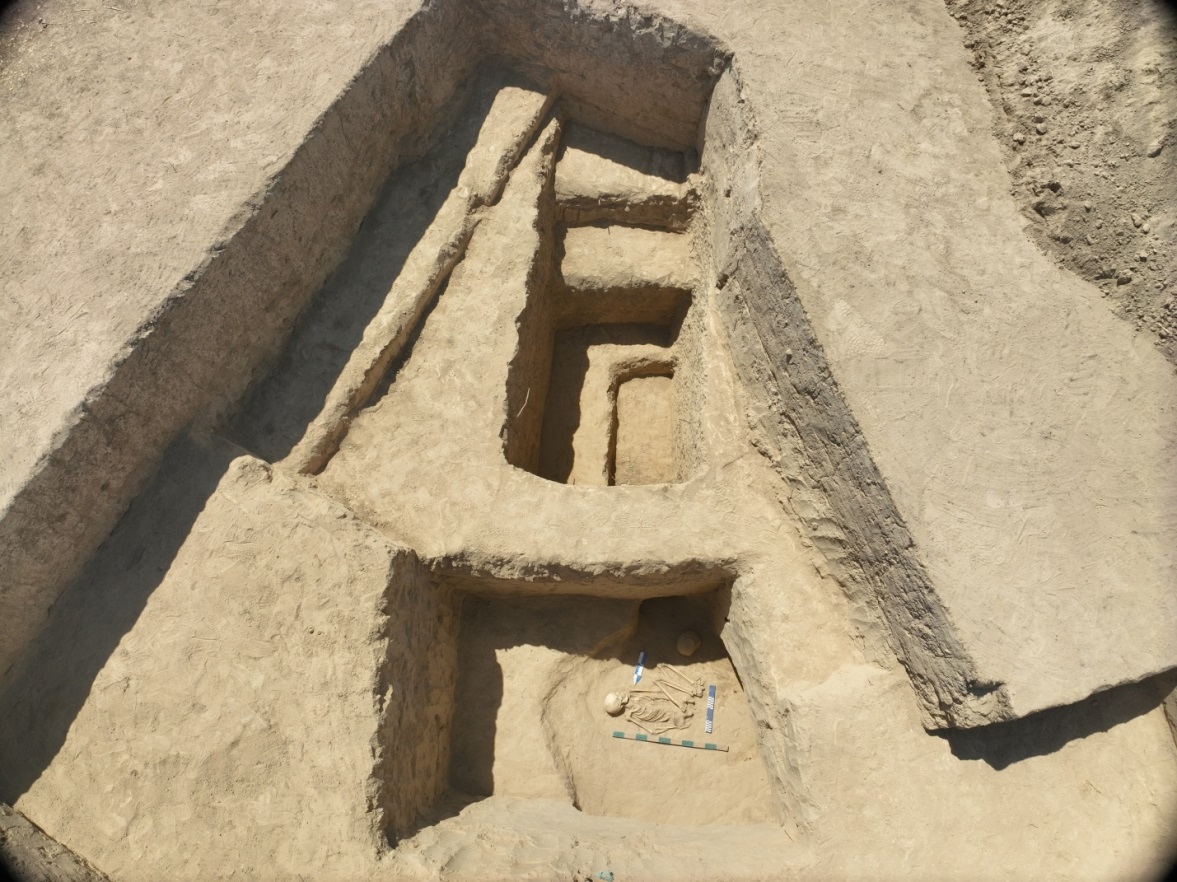 “T”-shaped catacomb tomb
“T”-shaped catacomb tomb 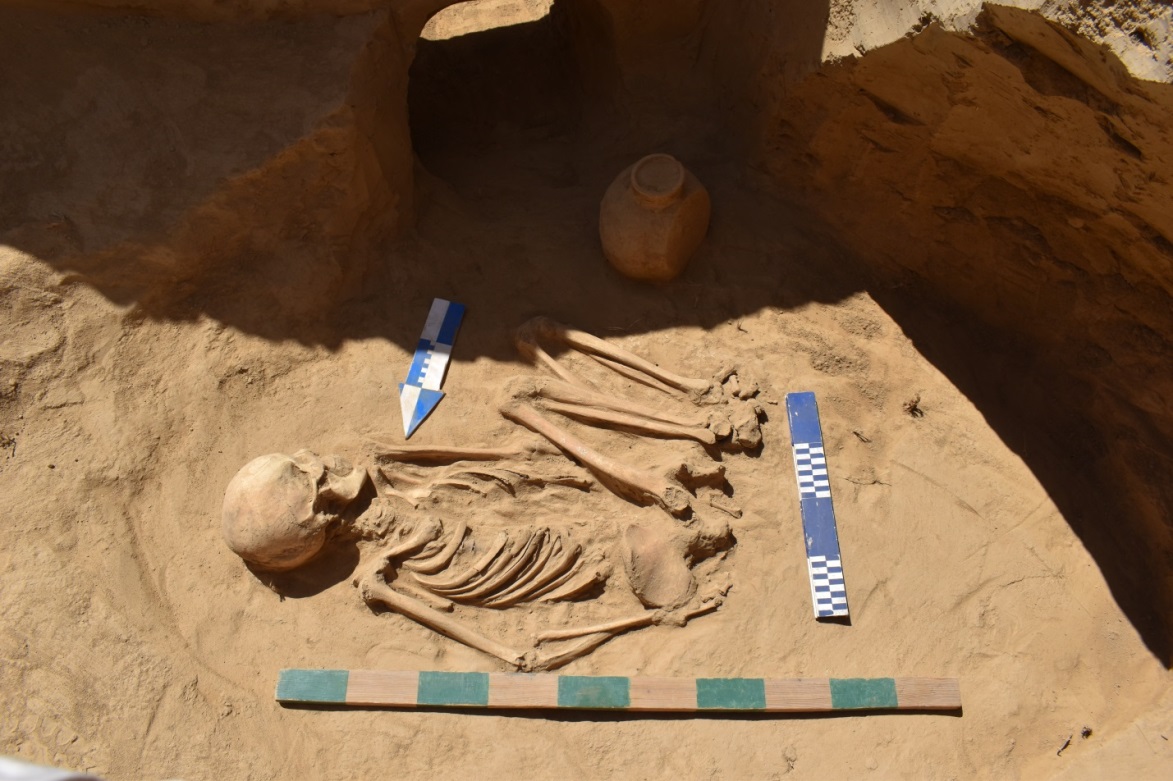 A skeleton facing the entrance of the dromos
A skeleton facing the entrance of the dromos